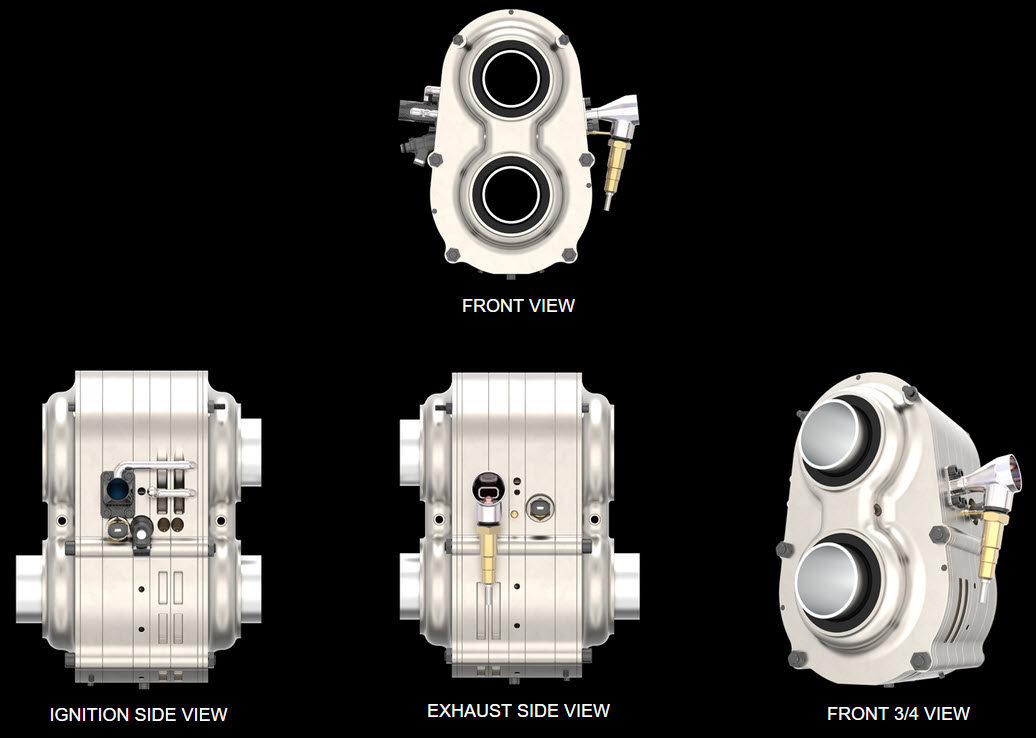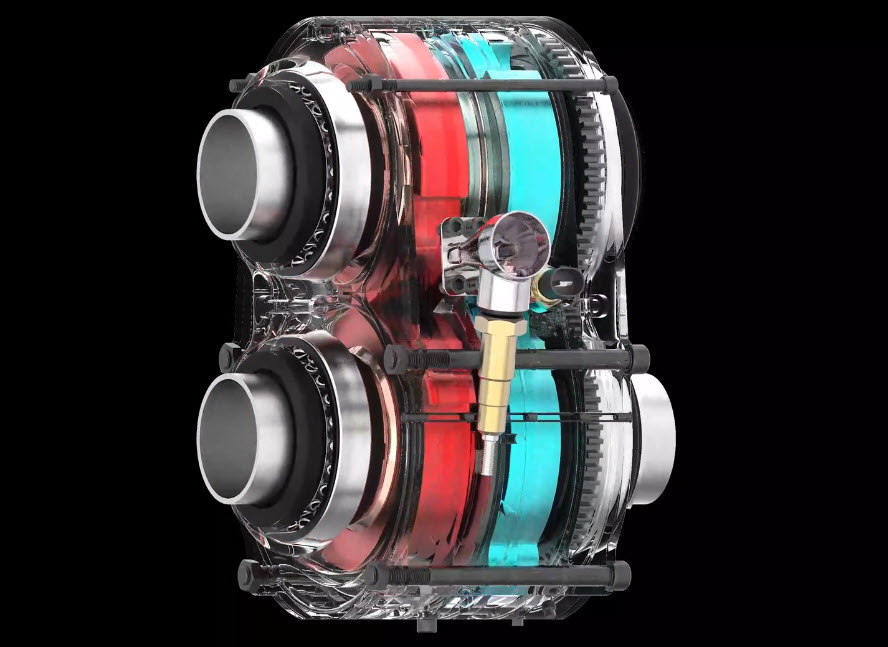La empresa Astron Aerospace ha presentado un nuevo y revolucionario motor de combustión interna más liviano, eficiente, potente y que empleando hidrógeno como combustible, se acerca a los requisitos de “cero emisiones”. Con solo 16kg de peso, refrigerado solo por aire, puede entregar 160 HP de potencia y alcanzar hasta 25.000 rpm. Además, permite el acople modular de unidades iguales, de manera tal de duplicar o triplicar la potencia total del sistema, según las necesidades de la plataforma. Inicialmente pensado para la industria aeronáutica y con sus componentes principales construidos en Titanio, se exploran alternativas de materiales más económicos, para su empleo en diversas aplicaciones.
The Omega 1 from Astron Aerospace is a brand new internal combustion engine concept and I really mean brand new. When I first looked at the images, I couldn’t figure out what was going on. It looked like some kind of stacked turbine, but it’s not. Then I thought it was a rotary of some sort, but it’s nothing like the rotaries we’ve seen before. It’s pretty ingenious, but you have to look at the video and study the descriptions and labels to understand it.
A single engine, as shown in the above, image weighs 35 pounds, produces 160 horsepower, 170 foot pounds of torque, idles at 1000 rpm and has a redline of 25,000 rpm. The engines can be stacked end to end and each additional unit adds the power of a single unit, two engines 320 horsepower, etc.. The power to weight ratio is incredible.
The engine is air cooled, the holes through the engine are surrounded by rotating shafts and the upper and lower shafts counter rotate eliminating gyroscopic forces.
The view above shows the interior of the engine and the colored rotors are the primary power producing components, the blue on the intake and compression side, the red on the power and exhaust side.
The intake air is compressed and passes to a prechamber between the rotors through a rotary valve where fuel is injected and as it enters the power side rotor it ignites, driving the rotor and then exits through the exhaust port.

That’s the very quick and simplified explanation, but to see it all happening, watch the videos and stop frequently so you understand the process.
Initial applications are aimed at aircraft and the engines will make use of titanium for weight reduction, though anticipated uses cover almost every internal combustion application you can think of and where cost is a factor, aluminum will be used. They mention hydrogen as an ideal fuel for the engine and when doing so, emissions will be close to zero.
Potential applications include Aerospace, Generators, Commercial Trucking, Automotive, Agricultural, Marine, Recreational, Construction and much more. They mention its use as a range extender for electric vehicles, but if it performs as they expect, why use electric at all?
The assembled team is very experienced in the automotive sector, machining, engineering and product development and they are looking for investors and partners to keep up the momentum. They have a prototype that has run as a proof of concept, but it has a long way to go.
I think it shows great promise, but we’ve seen many engines with promise over the years and whether it can move to the next step will determine whether it can succeed on a larger scale. With the headlong rush to electrics, getting attention and backing for this project will be no small feat in itself. It’s hard to make your case when people refuse to listen.
Internal combustion engines are still being developed, innovators with ideas are still hard at work and those who think the future is simply electric everywhere need to rethink their plans. I would really love to see this succeed.
Thanks for the tip, Brendan.
Fuente: https://thekneeslider.com


